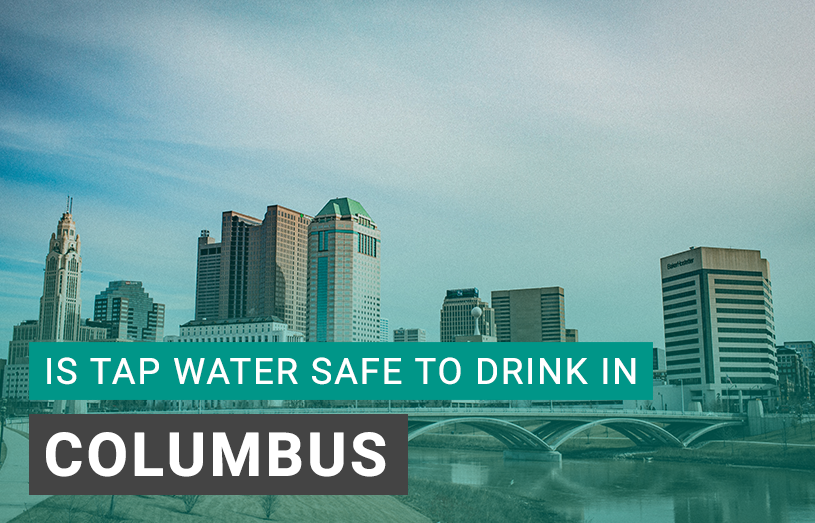Yes. Tap water is absolutely drinkable in Columbus, Ohio. The main signs of water quality are certainly its users. Columbus residents agree tap water is extremely safe to drink.
| Safe to drink? | Yes |
| The estimated price of bottled water (1.5l) | 1.58$ |
The other ones, for more all-embracing safety, or because they don’t like the taste of water, they use a tap water filter.

So, feel free to consume tap water in Columbus, Ohio, or if you’d prefer to improve the water quality, buy one tap water filter.
Sources of tap water in Columbus, Ohio
Surfaces waters, as well as the groundwater, make the water network in Columbus, Ohio. The surface water sources are composed of the Scioto River and the Great Walnut Creek. The Scioto River Valley, with magnificent sand and gravel sediment, is the main reservoir of groundwater. Due to that, water is extracted from deposits, and after that, it is purified and settled into use.
Although most people wonder if it is tap water safe for drinking, no one wonders how people can prevent the pollution of water sources. Therefore, the city of Columbus must improve water cleaning to comply with water quality standards and ensure the highest water quality for all people.
Columbus Public Water System
As the Division of drinking and ground waters provided the water quality report to the Environmental Working Group, it was necessary to improve the research laboratory for water quality control. So, Congress established the Safe Drinking Water Act (SDWA) that must be followed to achieve the highest standards of water quality.
According to the EWG’s Tap Water Database, there are 22 contaminants found in the water, so it was necessary to improve the research laboratory. Below we listed the most common contaminants found in the water.
- Bromodichloromethane
- Bromoform
- Chloroform
- Chromium (Hexavalent)
- Dibromochloromethane
- Dichloroacetic acid
- Nitrate
- Nitrate and nitrite
- Total trihalomethanes (TTHMs)
- Trichloroacetic acid
- 1,4-Dioxane
- Alachlor (Lasso)
- Atrazine
- Chlorate
- Fluoride
- Molybdenum
- Monochloroacetic acid
- Simazine
- Strontium
- Vanadium
As the EWG affirmed, “Legal does not necessarily equal safe,” so you must know what’s the best way to clean the contaminants from the water.
Process of the filtration
Natural water sources, we have already mentioned, are stored in water tanks. Then, rotating screens with the help of electricity, remove large impurities from the water. After removing large particles, the dose of alum added in the water cause coagulation follows, after which the water has to stand for the flock sediment to occur. This procedure takes 2-4 hours.
The next step involves softening the water. The most common causes of hard water are calcium and magnesium ions. The best way to remove them, and make the water softer is certainly adding sodium carbonate or caustic soda and hydrated lime in the water. This process also takes 2 – 4 hours. The next step involves adding carbon dioxide, which will most effectively lower the pH of the water to a satisfactory level of approximately 7.8.
Then it’s necessary to remove dissolved organic matter. In this process of water filtration, the Department of Public Utilities uses ozone and filters made of granular activated carbon. Btw, ordinary water filters are also made up of granular activated carbon, and especially the water you consume. One of the best disinfectants is surely chlorine, which disinfects water. Removing corrosion inhibitors from water is done by using fluoride, which is a powerful chemical.
BTW: Groundwater goes through reduced processes of water filtration. First of all, it is not necessary to wait for the sediment to settle to the bottom because it’s already there. Also, it’s not required to use ozone and screening the water.
Cost of bottled water in Columbus, Ohio
After all, if you’d preferably drink bottled than drinking tap water, you’ll pay about 1.58$ for 1.5-liter.


